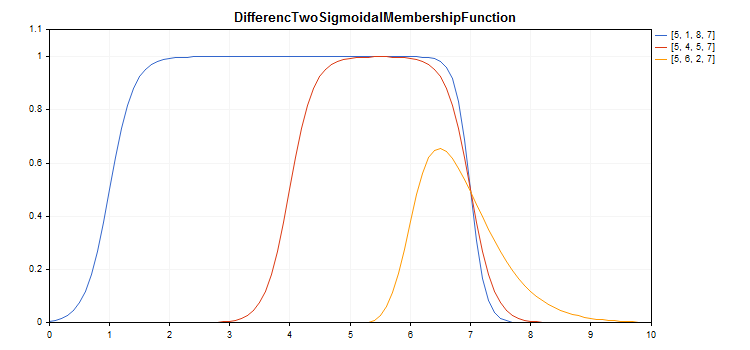CDifferencTwoSigmoidalMembershipFunction
Üyelik fonksiyonunu; А1, А2, С1 ve С2 parametrelerine sahip iki sigmoid fonksiyonun farkı şeklinde kullanmak için tasarlanmıştır.
Açıklama
Fonksiyon bir sigmoid eğri temelinde ayarlanır. Argüman değeriyle başlayan ve değeri bire eşit olan üyelik fonksiyonlarının oluşturulmasını sağlar. Bu tip fonksiyonlar "kısa" veya "uzun" gibi sözel terimlerle çalışmak istediğinizde kullanılabilir.

Çizelge çizmek için oluşturulmuş bir örnek kod aşağıda verilmiştir.
Bildirim
class CDifferencTwoSigmoidalMembershipFuncion : public IMembershipFunction |
Başlık
#include <Math\Fuzzy\membershipfunction.mqh> |
Kalıtım hiyerarşisiCDifferencTwoSigmoidalMembershipFunction |
Sınıf yöntemleri
Sınıf yöntemi |
Açıklama |
|---|---|
İlk üyelik fonksiyonunun eğim oranını alır/ayarlar. |
|
İkinci üyelik fonksiyonunun eğim oranını alır/ayarlar. |
|
İlk üyelik fonksiyonunun dönüm koordinatı parametresini alır/ayarlar. |
|
İkinci üyelik fonksiyonunun dönüm koordinatı parametresini alır/ayarlar. |
|
Üyelik fonksiyonunun değerini belli bir argümana göre hesaplar. |
//+------------------------------------------------------------------+
|